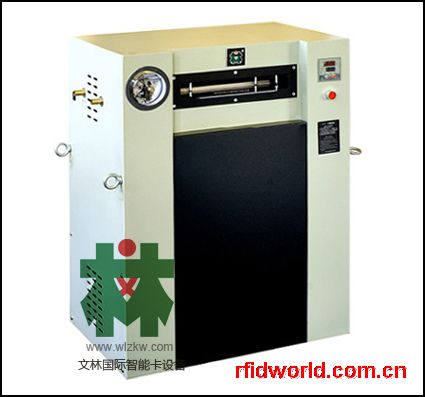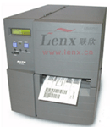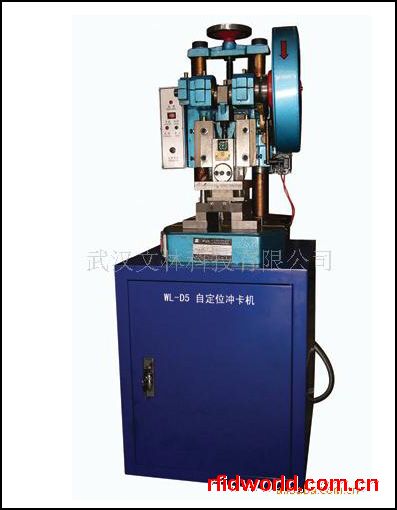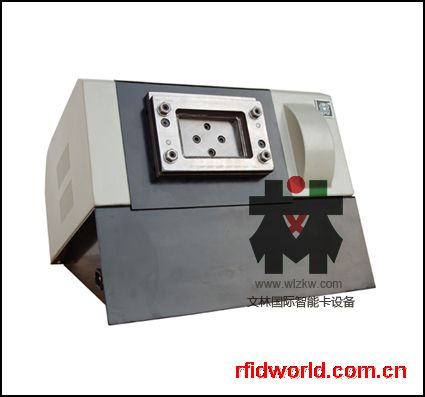Intermec : Gen2 的推广实施需由 EPC Global 认同
摘要: 业界一直所期待的新的第二代(Gen2)超高频标准,似乎能够促进厂家生产RFID系统相关设备,最终能够实现在世界各地任何标签都能够被所有识读器识读。EPC Global甚至宣称Gen2是第一个全球免版税的标准。这对Intermec Technologies公司无疑是一则震惊的消息,因为自从八月份开始他们就已经筹备专利使用费支付问题。
At first, it seemed as if the new UHF Generation 2 standards the industry had been waiting for would finally allow companies to begin making equipment so any tag could be used with any reader anywhere in the world. EPC Global Inc. even proclaimed Gen 2 the first global royalty-free standard.
This bit of news probably came as a shock to officials at Intermec Technologies Corp. They claimed since August that they wanted royalty payments from some patents they hold they say are needed to build chips, tags and readers that meet the Gen 2 specs. Without Intermec’s patents, an RFID system would be so stripped down, it would be unworkable, officials claim.
EPC Global officials, who had promised to deliver a royalty-free standard by end of 2004, determined Intermec’s intellectual property is not essential and only the royalty-free IP is needed to meet the standard. Last month, Intermec, which had been one of the early pioneers in developing the RFID standards with EPC Global, responded by withdrawing its payment plan—a move some say has put a freeze on the RFID market.
“This is going to be a bloody mess,” says a vendor and member of EPC Global’s Hardware Action Group that approved the Gen 2 standard who asked not to be named. “I don’t see how this is going to help anything. It’s only going to slow down implementation of RFID. We’re not doing anything until this gets sorted out.”
Companies that once knew just how much to pay Intermec for its IP based on a one-price licensing fee now have to negotiate their own terms. In fact, with the waters muddied, many have their own attorneys and engineers grappling with whether Intermec’s IP is indeed critical to meet the Gen 2 standard. This has further stalled development. The net effect is a “standards gridlock,” says ABI Research’s principal analyst Erik Michielsen.
“Strategically, this could leave millions of dollars of infrastructure useless,” says Joe Leone, CTO and Founder of RFID Global Solution. “Companies who were ready to put in big orders waited instead for a Gen 2 standard. And they’re still waiting.”
However, both EPC Global and Intermec say they have not seen a slowdown in the RFID market. “Instead of creating a pall on the industry or holding the industry hostage as some would claim, we’re actually seeing an increase in the adoption rate,” says Intermec Vice President Mike Wills. No one was anxious to pay the licensing fee since everyone had to pay the same rate, but companies are “now pounding on my door” since they can freely negotiate very specific and tailored agreements, he says.
Royalty-free from the beginning
To encourage fast and global adoption, EPC Global wanted companies to offer its IP royalty free from the very beginning. Even after EPC Global announced the ratification of Gen 2, officials maintained the standards were royalty free. They still do.
“Our charter is that if a company participates, it offers royalty-free technology, said EPC Global’s Sue Hutchinson, director of product management, “which is absolutely necessary for the standard to work.”
EPC Global requires its subscriber companies to declare any intellectual property that they feel is relevant to EPC standards, and declare whether they will make it available to other vendors royalty-free or on a reasonable and nondiscriminatory (RAND) royalty-bearing basis. RAND is a term used by the International Standards Organization (ISO) and similar groups as a guideline for patent contributors to standards. If that technology is licensed for a fee, the terms must be published, not exorbitant, and the same for all implementers rather than subject to individual negotiation.
Intermec was a helpful and leading participant in the process from the beginning. Intermec even agreed to suspend its IP licensing program for 60 days in the fall to allow the Gen 2 prototype to be tested. Intermec claims more than 140 patents related to UHF passive RFID technology, and made it clear in writing, dating as far back as Aug. 9, 2004, that of the 14 patents it believed to be crucial to the evolving specification, it expected to collect licensing fees from nine; the other five it made available royalty-free.
Under Intermec’s fee structure, any company, no matter what size, would pay the company at least a $750,000 prepayment fee or a 5% royalty on sales of chips, inlays, tags and labels and a $1 million prepayment fee or a 7.5% royalty on sales of readers and printer-encoders.
Meanwhile, EPC Global continued to push for royalty-free claims as it raced to meet its deadline to have a new Gen 2 standard by the end of 2004. Things finally came to head in January.
Royalty-free vs. royalty-bearing showdown
Less than a month after the ratification of Gen 2, EPC Global’s outside law firm, Dann, Dorfman, Herrell & Skillman, stated in a Jan. 10 letter that Intermec’s IP wasn’t essential to build tags to the Gen 2 standard. This was a legal trigger that allowed Intermec the chance to withdraw the RAND agreement that it had willingly offered months before.
Intermec President Tom Miller responded in a Jan. 14 letter to Hutchinson. He wrote that because EPC Global declared that its issued and outstanding patents are not necessary to practice the Generation 2 standard, “this finding relieves [Intermec] of any obligation to grant licenses…and gives Intermec the right to set any terms and conditions it wishes…”.
Intermec further declared in a Feb. 1 written statement, Intermec’s Comments on EPCglobal’s IP Assessment, that while Intermec is still willing to consider licenses for the IP it declared, “We’re not required to grant such licenses and we can establish any terms and conditions we think are appropriate.”
The impact is significant. Negotiation is far more complex than RAND IP. It obliges vendors to labor through legal agreements, be they royalties, patent trade or some other mechanism. Intermec appears poised to take legal action against those who violate its IP patents. The company recently sued Matrics, now owned by Symbol Technologies Inc., over a patent infringement case regarding Class 0 and Class 1 equipment.
Intermec believes that without its IP, Gen 2 technology simply is not viable.
For instance, Intermec says in its Feb. 1 statement, that without Intermec’s IP, readers could not hop from frequency to frequency. “Elimination of frequency hopping would result in an RFID system with a range of less than one foot and intermittent (<10%) operations. Customers are not going to buy primitive systems like this when they can purchase an Intermec system with long range capability (>10 feet) and continuous (100%) operation,” the statement claims.
Hutchinson points out that two of the major issues Intermec points to in their patents, spread spectrum and frequency hopping, have been used in other technologies for many years. Jeff Jacobsen, president of AWID, a manufacturer of readers that believes their products to be the first to meet Gen 2 specs, said that claiming a patent on the ability to successfully use RFID over distances more than one or two feet is silly, considering the nature of radio waves. “It’s like patenting sunshine.”
Intermec concludes simply: RFID “products cannot be commercialized without a license from Intermec.” Hutchinson responds, “That is their opinion.”
Where does RFID development stand?
While some are taking a wait-and-see approach, others are continuing with their development plans.
Texas Instrument’s Bill Allen said that the company is sticking to its schedule of producing pilot quantities in Q2 and full production in Q3, the same release plan it stated before the IP battle. TI was among the most cautious of tag producers, having sat out Class 0 and Class 1 production, and awaiting the Gen 2 standards. As of this writing, neither Impinj nor ThingMagic have changed their production schedules, nor have any tag or reader manufacturers publicly stated they’ve slowed production. Thusfar, most are claiming to offer pilot quantities to Gen 2 standards in Q1 and Q2 2005, with full production in Q2 or Q3.
“Bottom line,” said TI’s Bill Allen, “The chip we’re designing will be offered to the market royalty-free based on Gen 2. We’ll all have to figure out from the application standard where it comes into play with Intermec.”
Intermec’s Medford observed that rival vendors take IP in stride, and have budgeted for it. “Nobody builds products and gives them away, and hopes they can sell a little on the side. The vendors all understand that. They want IP as low as possible, but they know everyone has to stay in business. They’re a much more understanding audience,” compared to integrators and implementers.
Indeed, barcodes, RFID’s close cousin, went through much the same growing pains. “We’ve all done this before,” said TI’s Allen. “These same issues came up 30 years ago with a variety of companies like IBM, Symbol and Intermec claiming intellectual property surrounding barcodes. It took a while for the dust to settle, but ultimately, IP licensing evolved into ‘this is the price of doing business,’ and that’s what’s happening with RFID.”
If none of those vendors seem cowed by the threat of royalties to Intermec, likely, it is because they have learned that caution costs market share.
Patent issues nothing new
IP is nothing new to standards, so there is precedent for royalty-bearing standards.
“Where do people think technology comes from?” asks Intermec’s Vice President of RFID Scott Medford. “Someone had to spend the time, money and research to create it. And in some of the discussions I get into with less knowledgeable folks, they ask ‘why wouldn’t you just give it away for the good of mankind?’ Thinking like that, technology companies would no longer be able to responsibly invest in creating technology.”
Indeed, IP is in every computer, automobile, toothbrush and plastic bag dispenser. End users don’t see it, nor do they need to. Without it, every manufacturer would need to invent every product from scratch. Instead, Medford sees IP as an “agent to accelerate business and lower cost. Little shops have sprung up using our underlying technology, and that’s why IP is good for the market. We had the money and power to bring products to market, and smaller companies without the horsepower could build on it.”
Licensing did not stifle barcodes, nor has stifled wireless technology like Bluetooth, Wi-Fi, telephone systems or “just about every major technology out there,” said Hutchinson. “Look under the covers, and cross-licensing makes development possible and able to move at a good rapid pace.”
Clever timing or not on the part of Intermec, it begs the question, where is the crime? And as a fierce protector of its patents—does it have a case, and the wherewithal to protect its patents? Those at the core seem to think so.
Said Harmon: “Intermec hasn’t stopped its [patent infringement] suit against Matrics” filed in June 2005, “and I assure you if companies come out with Gen 2 product, Intermec will try to negotiate but will sue if necessary.”
“It’s inevitable,” says ABI Research analyst Erik Michielsen. “No one will be able to develop or implement Gen 2 hardware or software solutions without paying an Intermec royalty. That sets the stage for negotiation. I don’t see Intermec as wanting to stifle the business. If they have to work with organizations to make sure it’s fair and balanced, they’ll do it.”
Should end users wait for the dust to settle?
They can’t afford to.
“I’d advise them to proceed cautiously, but still to proceed” said Michielsen. “When Gen 2 technology is fully available, the ability to use it in high volumes, those who haven’t taken advantage of RFID will be at a disadvantage.
“But new users should first understand the technology and what business areas could benefit from RFID-enabled operations. From there, RFID-driven projects can begin connecting locations to take advantage of the technology.”
SIDEBAR:
Should I wait or should I go ahead?
Many vendors and end-users are asking themselves that very question as they consider whether to invest more in existing RFID equipment (Class 0 and Class 1) or wait until Gen 2 begins to roll out.
How soon Gen 2 products are available is still uncertain. Some expect equipment as early as this spring, but others caution that it could take months, if not several years, for the bugs to be worked out and to have a suite of products supporting RFID.
Most experts agree to buy only what you need now. “Keep it cheap right now guys, because a lot of it is going to get replaced in a year from now,” advises John “Teo” Ruscin, RFID team leader at GE Aircraft Engines. But, it’s also important to “get out now” so you don’t get behind in the learning process, adds Steve Georgevitch, supply chain manage at The Boeing Co.
In the meantime, many vendors say their current Class 0 and Class 1 will be compatible with the new Gen 2 specs. How can you be sure?
Get a guarantee. “Get it in writing that they guarantee the equipment is forward-compatible without hardware replacement,” says Louis Sirico, vice president of RIFD Global Solution.


 登录
登录
 注册
注册








